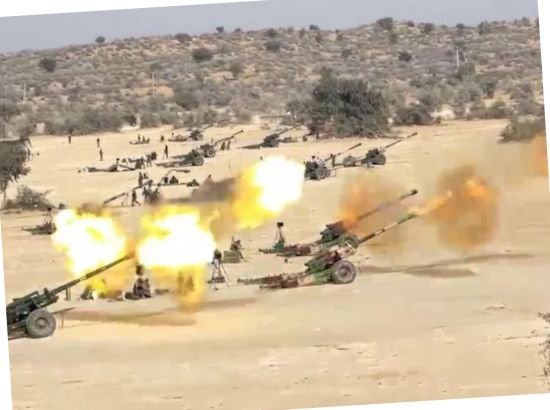
The Indian Army conducted a massive military drill named ‘Amogh Fury’ near the Pakistan border in Rajasthan’s Thar desert, showcasing its advanced war capabilities. The exercise took place at the Mahajan Field Firing Range (MFFR), located about 100 kilometers from the border, under the Sapta Shakti Command.
The high-intensity Amogh Fury exercise included battle tanks, infantry combat vehicles, attack helicopters, long-range artillery systems, drones, and other cutting-edge weapons platforms. Their synchronized operations highlighted the Army’s ability to fight modern wars with speed, precision, and coordination.
The drill simulated real battlefield conditions, testing operational readiness, troop deployment, and joint combat strategies. It also demonstrated the Army’s ability to strike quickly and effectively in multi-domain warfare scenarios.
For the first time, Amogh Fury highlighted the use of network-based communications, command-and-control frameworks, real-time surveillance, and target acquisition systems. These created a Common Operational Picture (COP) that was seamlessly shared across all levels of command. This enhanced the Army’s capacity to counter emerging threats in modern warfare with superior situational awareness.
Beyond being a drill, Amogh Fury was a strategic message. Conducted close to the border, it underlined the Indian Army’s integration of technology, jointness, and operational preparedness. By showcasing rapid troop mobilization and combined firepower, India signaled its readiness to respond to any aggression with overwhelming force.
Through Amogh Fury, the Indian Army demonstrated that it can deploy forces quickly, execute offensive ground operations, and integrate modern technologies effectively. The exercise confirmed India’s ability to defend its borders while projecting power in any conflict scenario.
This powerful display reinforced the Army’s commitment to safeguard national security and conveyed to adversaries that India remains fully prepared for future challenges.